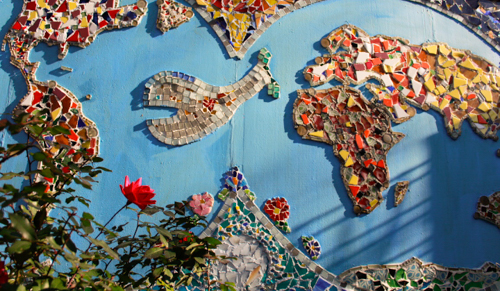Casa Marianella’s fundamental mission is to offer hospitality to refugees fleeing violence and war. During the organization’s 30-year history, ambulance it has seen the population it serves change dramatically, but its vision has remained the same. Indeed, despite historical changes (and perhaps sadly), the need for Casa Marianella is just as great today as it was in 1986.
As many know, Casa Marianella was born during the Central American Civil Wars of the 1980s (really proxy conflicts typical of the Cold War era). Casa was named after Marianella García Villas, a Salvadoran lawyer who fought for Human Rights until she was assassinated in 1983. The organization was founded by an interfaith coalition of activists, known as the Austin Interfaith Task Force for Central America. And, indeed, for many years, it did primarily serve Central American (and other Latin American) refugees.
Around the mid-2000’s, however, a change occurred, as African refugees began to arrive at Casa’s doorstep in greater and greater numbers, with people arriving from West, Central, and East Africa alike (the greatest concentration being from the Horn of Africa region). These refugees, of course, were different in myriad ways from Casa’s typical residents, but they shared the profound fact that they were fleeing political and/or economic violence. So Casa took them in, and, speakers of dozens of languages ranging from Tigrinya to Ki-swahili, they lived side-by-side with the organization’s Latin American residents, attending nightly juntas, performing nightly aseos, and sitting before the virgen de Guadalupe.
Today, more than half of Casa’s residents are from Africa (from countries ranging from Somalia to Angola to Mali). There are also still a number of Latin Americans, and a smattering of residents from other parts of the world including Iran, Iraq, and Nepal. These residents take all sorts of vast and unfamiliar routes to arrive at the Texas border, many even (particularly from the Horn of Africa) beginning by flying to Brazil, from which point they work their way up country by country to arrive in the US (a migration route that is still little studied or written about). Amidst all of this, rather than changing its mission, Casa has remained consistent, and in doing so has reflected over time the shifting patterns of war and violence. At Casa, in other words, hospitality can be carried out in any language.
A final note though is that, unfortunately, Casa’s changing demographics are not solely a product of changes in the patterns of violence. Rather, Latin America, and Central America in particular, remain some of the most violent places in the world. The people who flee this violence, however, upon arriving in the United States, face the worst prospects of winning asylum, and the best chances of being deported, either straight from detention, or most appallingly, through New Years home raids. So, while Casa Marianella embraces fully its new demographics and diversity, its staff and supporters also hope that consciousness will soon change around Latin and Central American refugees, so that the organization can once again offer hospitalidad to our neighbors to the South.


Great article, very informative. Thank you for your good work.